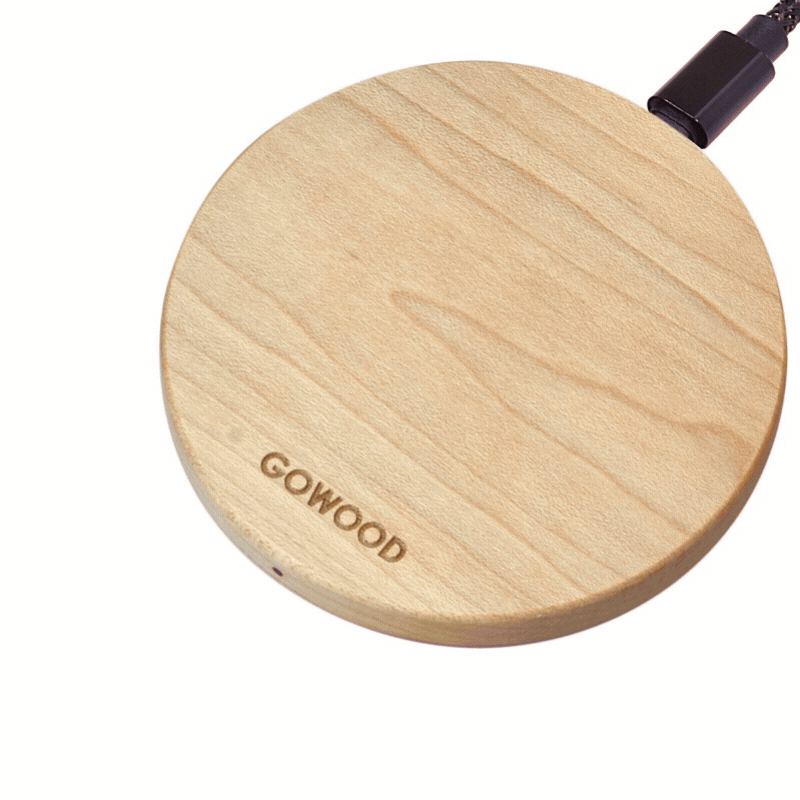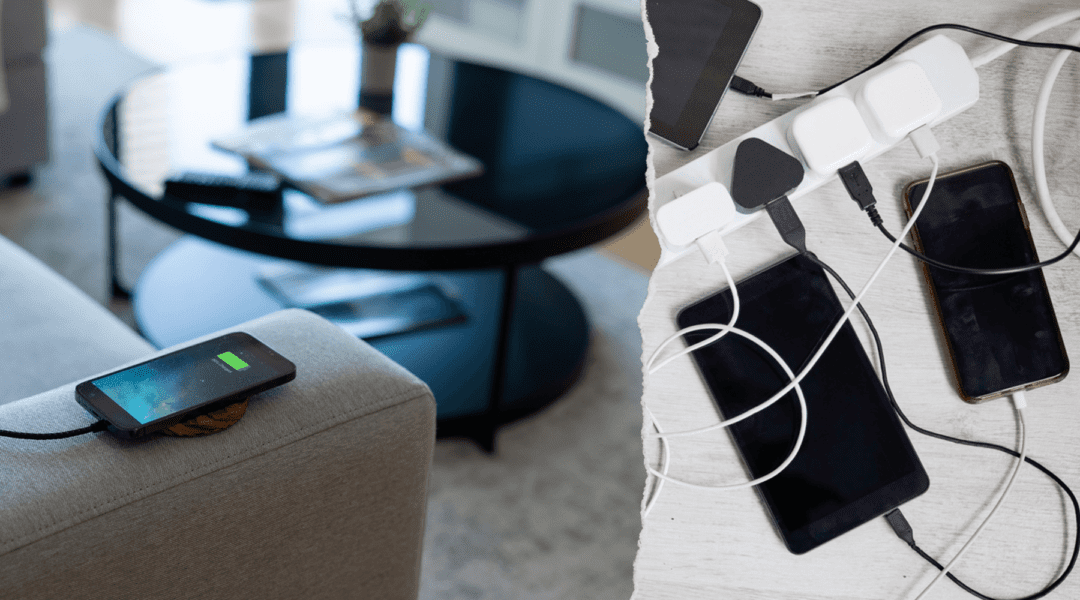general
Wireless Chargers vs. Wired Chargers | Which is Better?
With wireless chargers becoming increasingly popular, it’s easy to see why people want to charge their phones without wires. However, all phones still have a charging port, and wired chargers are still around. So, which one is better?
The truth is, there’s no easy answer. Both wired and wireless charging have their good and bad points. To figure out which one is right for you, you need to learn a bit about each type. This guide will explain how both wired and wireless chargers work, and how they can affect your phone’s day-to-day use.
How do Wired Chargers Work?
Most phones, computers, and other devices that need charging come with a cable and a power adapter. It’s pretty straightforward! Plug the adapter into the wall, connect the charging cable to the adapter, and then plug your device in. It’s like sending water through a hose, transferring energy from the wall to your device.
But wired charging isn’t perfect. Cables can be a pain. They get tangled, lost, or broken, which means more trouble and extra costs. Also, you’re tied to the spot while your phone charges. Can’t walk around or use it freely. Not ideal if you’re always on the go.
How Wireless Chargers Work
Wireless chargers use a similar idea, but instead of cables, they use magnetic fields. It works like this: two coils of wire are called “inductive coils”, when electricity flows through one coil, it creates a magnetic field. This field can then transfer energy to a second coil, even if they’re not physically touching.
That’s what happens with a wireless charger. It has a coil that generates a magnetic field, and your phone also has a coil. When you place your phone on the charger, the magnetic fields interact and energy is transferred, charging your phone’s battery.
You might have heard of Nikola Tesla, the famous inventor. He invented the “Tesla Coil” which uses magnetic fields to transfer energy wirelessly. Wireless charging is a modern application of this concept.
The coils used in wireless chargers are small, which is why you have to place your phone directly on the charging pad. This is different from wireless power transmission, where you could potentially charge devices from a distance.
Wired Charger vs. Wireless Charger
#1 Wireless chargers are cable-free, making it much easier to charge your phone…
Wireless chargers take the hassle out of plugging and unplugging cables. No more fumbling with wires! Simply place your phone on the charging pad, and it starts charging automatically. Everything looks neat. No more searching for your cable or worrying about where you left your charger.
But, hold on, not all wires have disappeared just yet. You’ll still need a cable to connect the charging base to the power source.
#2 Charging speed
Wireless chargers are getting faster all the time, with “fast charging” and « super fast charging » becoming more common. Most people can fully charge their phone in a couple of hours, which is great if you don’t have time to wait all night.
Wired chargers, on the other hand, usually take longer to charge your phone. A lot of people just plug them in overnight to make sure they’re fully charged in the morning.
#3 One charger, multiple devices
Wireless charging lets you charge multiple phones at once, no need to pack a bunch of cables. This is especially handy for people who own different types of phones, like an iPhone and Android.
Many wireless chargers and phones use the Qi (pronounced “chee”) standard, which means you can use one charger for many different Qi-compatible devices. It’s a “one size fits all” solution for wireless charging.
Wireless charging has another benefit, some phones like the Samsung Galaxy Note 20, have a cool feature called “reverse wireless charging”. This lets them share their battery power with other devices. For example, if your friend’s phone is about to die, you can place their phone on the back of your Note 20, and it will start charging wirelessly!
#4 Wireless chargers are safer for your phone and your data
Wireless charging is a safer way to power your phone. Because there’s no direct connection, it reduces the risk of connection issues and electric shocks.
Plugged-in devices can cause injuries if used improperly, but with wireless chargers, the power transfer stops as soon as you pick up your phone.
There’s also another safety concern with public USB chargers. You might not realize it, but some of these free charging stations can collect your data while you’re using them! Wireless charging eliminates this risk.
#5 Wireless charging looks much neater
Wireless chargers keep your desk or nightstand looking good. No more messy cords! It’s a simple way to charge your phone without making a mess. You won’t have to worry about tripping over cords or pulling your phone off the table.
Wireless charging is a modern way to charge your phone that looks nice and is easy to use.
#6 Battery protection
Wired chargers don’t always protect your phone from getting too hot or overcharged. While the cables can limit how much electricity flows into your phone, it’s still easy for batteries to overheat or get overcharged, which can shorten their lifespan.
But wireless chargers have built-in sensors that detect when your phone is getting too hot. If it does, they’ll slow down the charging process to let the battery cool down to protect your phone battery from overheating.
GOWOOD wireless chargers also have clear LED lights that tell you what’s going on. Is the charging process blocked? Is your phone fully charged? The LED lights will let you know.
The Bottom Line
Both wired and wireless chargers have their pros and cons, making it tough to say which one is best. If you’re leaning towards wireless charging, we recommend checking out our wood wireless charger. It’s a sleek, eco-friendly choice that’s perfect for anyone looking to minimize their plastic footprint.

Our wireless charger offers fast charging with a maximum output of 15W, so you can quickly power up your iPhone 8 and up, or any Samsung Galaxy S7 or later model. It also comes with a clear LED light to show you exactly what’s going on.
We believe in quality and sustainability, which is why we’ve designed this charger with minimal plastic. Only the USB cable and the electrical circuit contain plastic. The rest is crafted from beautiful, natural wood. It’s also lightweight and portable, making it ideal for travel.
And of course, we offer a 90-day warranty (extendable to 180 days), easy returns, and friendly Canadian customer support.
Click here to explore our wood wireless chargers




 English
English